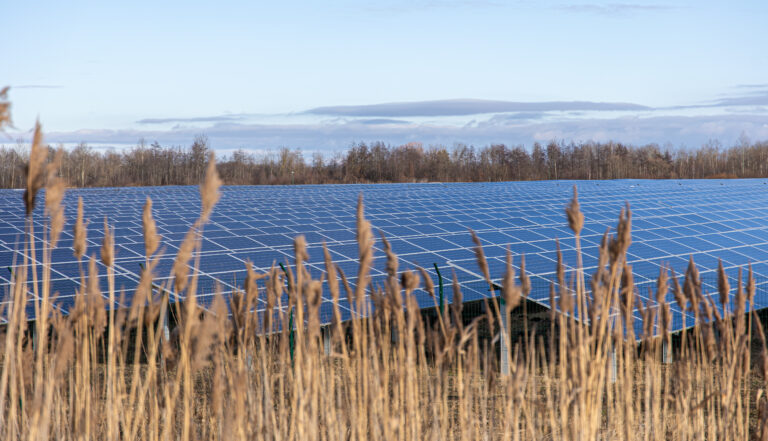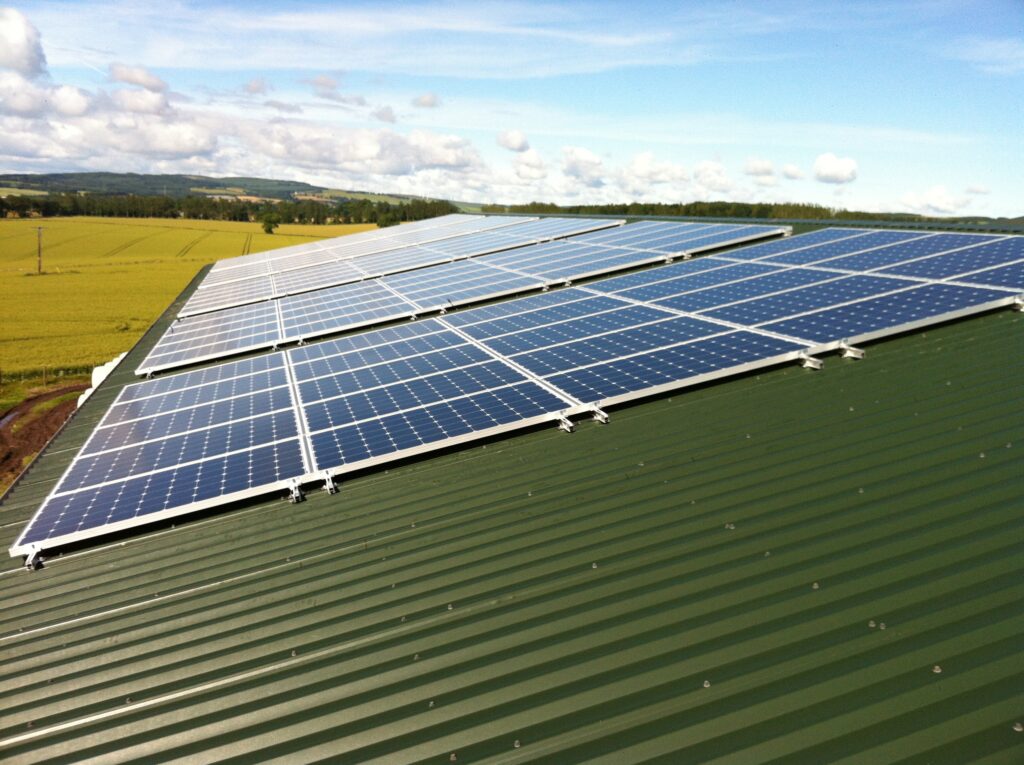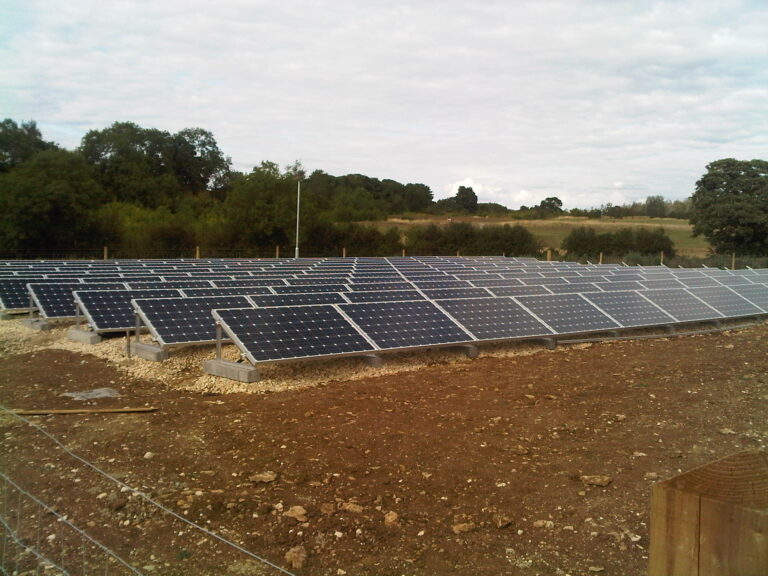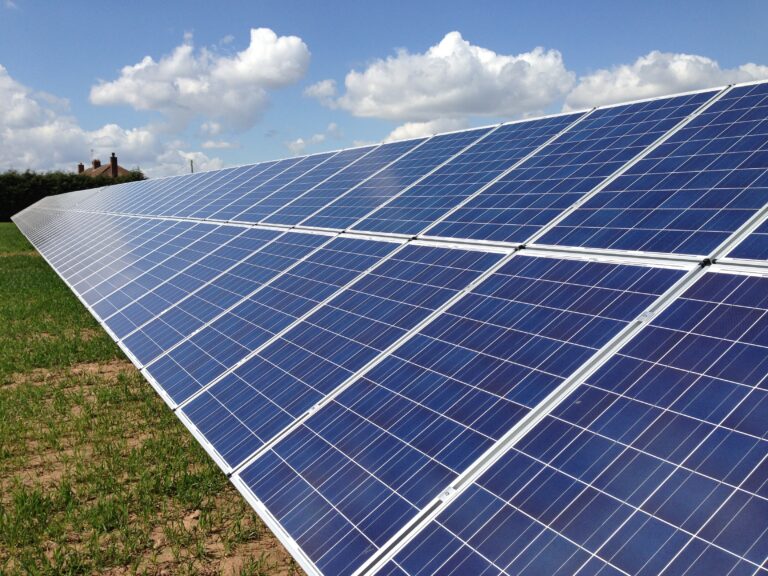Solar Panels on Farmland: Maximising Renewable Energy While Preserving Agriculture
As the world embraces renewable energy, solar panels on farmland have become a practical and sustainable solution to generate clean energy while utilising underutilised agricultural spaces. Ground mounted solar systems, commonly known as solar farms, are increasingly being installed on lower-grade agricultural land, striking a balance between food production and energy generation. Careful planning ensures that solar plans on a farm projects respect land quality, terrain preferences, and regulatory requirements, enabling agricultural and energy goals to coexist.

Solar Panels on Land Finding the Right Balance

Installing solar panels on farmland offers a practical solution for generating renewable energy while utilising underutilised land. However, it’s crucial to preserve high-quality agricultural land, known as Best and Most Versatile (BMV) land, for food production to ensure long-term food security. Instead, solar developers prioritise lower-grade agricultural land, such as Grade 3b, or repurpose previously developed land like brownfield sites.
This approach minimises disruptions to farming operations, strikes a balance between energy generation and agriculture, and promotes sustainable land use. By targeting less versatile land, solar panels on farmland contribute to clean energy goals without compromising agricultural productivity.
Key Considerations For Solar Panels on Farmland
The quality of agricultural land plays a vital role in assessing its suitability for solar energy projects. In the UK, land is categorised into grades based on its agricultural potential, helping developers determine the most appropriate sites for solar panels farm land projects. Lower-grade land is often prioritised to balance renewable energy goals with the preservation of prime farmland.
Grade 3b Land:
Grade 3b land, classified as moderate-quality agricultural land, is frequently chosen for installing solar panels on farmland. While it is less versatile than Best and Most Versatile (BMV) land, its limited agricultural potential makes it a practical option. Using Grade 3b land allows developers to balance renewable energy generation with agricultural activities, supporting sustainable land use without impacting prime farmland.
Best and Most Versatile (BMV) Land:
Best and Most Versatile (BMV) land is the highest-quality agricultural land, primarily reserved for food production due to its critical role in ensuring food security. Solar farms are rarely developed on BMV land to preserve its agricultural value and avoid conflicts between farming and renewable energy priorities, ensuring sustainable land use while prioritising essential agricultural needs.
Previously Developed Land:
Repurposing brownfield or previously developed sites for solar farms is a sustainable approach that avoids interfering with active agricultural activities. These sites are often prioritised for solar panels on farm land projects, as they allow renewable energy generation without disrupting essential farming operations. Utilising such land supports sustainability while preserving high-quality farmland for food production.

Terrain Preferences for Solar Farms
Avoiding Wetlands and Steep Slopes:
Wetlands, steep inclines, and heavily shaded areas pose challenges for solar projects by reducing energy production and complicating installation efforts. These conditions make such locations less ideal for solar panel systems. Similarly, north-facing slopes are avoided due to their limited sunlight exposure, which hampers efficiency and makes them unsuitable for maximising renewable energy generation.
Clear, Flat Land:
Flat or gently sloping terrain is ideal for ground mounted solar systems, as it allows for maximum sunlight exposure and simplifies installation processes. Land with a slope of no more than 5 degrees is preferred, as it minimises shading, reduces construction challenges, and ensures optimal energy generation efficiency, making it the perfect choice for solar energy projects.
Access and Infrastructure:
Sites with reliable road access and close proximity to grid infrastructure are highly preferred for solar panels on land projects. These factors reduce transportation and installation costs, streamline construction logistics, and ensure efficient energy transmission. Choosing such locations enhances the overall feasibility and cost-effectiveness of solar energy systems, making them an ideal choice for developers.

Other Considerations for Solar Farms on Agricultural Land
When developing solar panel farmland, it’s crucial to assess soil health, biodiversity, and water management to ensure sustainability. Compliance with local zoning laws, environmental regulations, and community interests is essential. Additionally, careful planning should include strategies for land restoration, wildlife protection, and minimising disruptions to surrounding ecosystems, while maximising energy output without harming the environment.
2. Cumulative Impacts
Authorities evaluate the cumulative impact of multiple solar farms in the same region to strike a balance between promoting renewable energy development and preserving agricultural land. This assessment helps prevent over-concentration of solar installations, ensuring that local communities, ecosystems, and wildlife are not negatively impacted. By managing this balance, authorities protect both energy goals and environmental sustainability.
1. Planning Permission and Regulations
Developing solar panels on farmland often requires planning permission, especially if the land is protected, listed, or located within a world heritage site. Developers must engage with local planning authorities to navigate regulatory requirements, address concerns about land use, and evaluate potential visual or environmental impacts. Ensuring compliance with these factors is essential for obtaining approval and minimising disruptions.
4. Wildlife and Biodiversity
Integrating biodiversity initiatives, such as planting wildflowers or creating habitats for local wildlife, significantly enhances the environmental benefits of solar farms. These efforts not only promote ecosystem health but also support sustainable land management practices. By fostering biodiversity, solar farms help create a more resilient environment, contributing to both renewable energy goals and long-term ecological balance.
3. Dual Use Opportunities
Solar farms can support dual-use, allowing agricultural activities to coexist with energy generation. The land beneath solar panels can remain productive for grazing livestock, growing pollinator-friendly vegetation, or engaging in other low-intensity farming practices. This approach promotes sustainable land use, enhances biodiversity, and provides farmers with additional income streams while contributing to renewable energy production.
Benefits of Solar Panels on Farmland
By responsibly integrating solar panels on farmland, it’s possible to achieve both agricultural and renewable energy goals, promoting sustainable land use while providing clean, renewable energy without compromising farming activities. Key benefits include:
2. Additional Revenue Streams
Leasing land for solar panel installations offers landowners a consistent and reliable source of income, enhancing the financial sustainability of their farms. This additional revenue stream helps offset agricultural costs and provides economic stability. Furthermore, by hosting solar farms, landowners contribute to renewable energy production, supporting environmental sustainability and advancing the transition toward cleaner, greener energy solutions.
1. Energy Independence for Farms
Solar farms can provide a reliable source of energy for agricultural operations, significantly reducing energy costs and dependence on the grid. This is particularly beneficial for farms in remote areas where access to traditional power sources may be limited. By adopting solar energy, farms can lower their carbon footprint, promoting sustainability while maintaining operational efficiency.
4. Biodiversity and Conservation
Solar farms can enhance biodiversity by providing new habitats for local wildlife and encouraging the growth of pollinator-friendly plants, such as wildflowers. These efforts not only support ecosystem health but also benefit nearby crops by promoting natural pollination, improving crop yields, and fostering a more resilient environment. This approach contributes to both agricultural productivity and ecological sustainability.
3. Enhanced Sustainability
Leasing land for solar panel installations provides landowners with a stable and long-term income stream, boosting the financial sustainability of their farms. This extra revenue can help offset operational costs and support farm profitability. Additionally, by hosting solar energy projects, landowners contribute to the growth of renewable energy, playing a role in reducing carbon emissions and promoting a more sustainable future.
Conclusion
Ground mounted solar array systems and solar panels on farmland represent a versatile and sustainable approach to renewable energy. By prioritising lower-grade land, such as Grade 3b, and repurposing brownfield sites, solar developers can balance renewable energy production with agricultural preservation.
With thoughtful planning, solar farms can enhance land use by powering farm operations, supporting biodiversity, and providing landowners with additional income. These projects ensure that solar panels on land contribute to a greener future while respecting the essential role of farmland in food production.
If you’re considering solar panels on farm land, consult Excel Energy your trusted solar energy provider. We will guide you through the process, ensuring your project maximises energy production while maintaining the agricultural value of your land.
